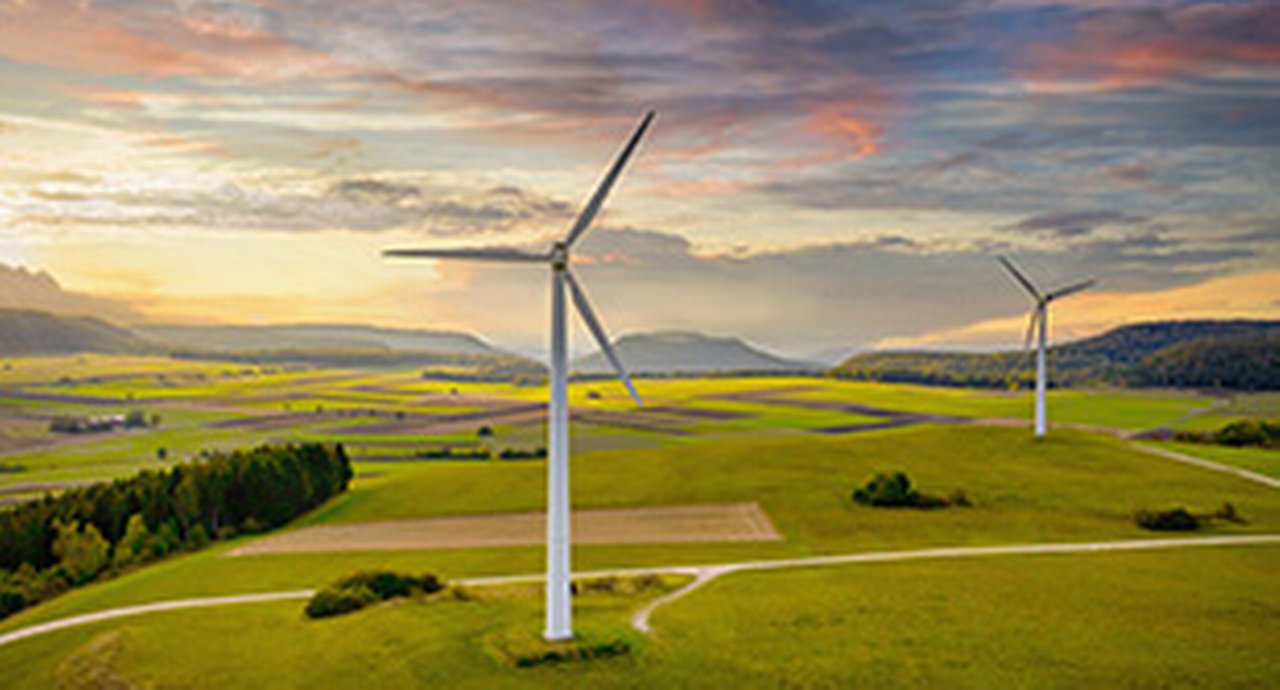10 November 2021
While governments are making announcements to reduce emissions, the responsibility to make the targets happen falls onto the corporates. flow summarises new Deutsche Bank Research demonstrating why costs are a key concern for some corporates and how finance can support the transition
MINUTES min read
Before the 26th UN conference on climate change (COP26), there were pockets of cynicism in some quarters about how much would be achieved.1 With China’s President Xi Jinping not even travelling to Glasgow, the world’s largest emitter of CO2 emissions was missing leadership representation at the summit. However, despite the misgivings, the conference has brought encouraging progress.
First, the US and the EU have announced a global partnership to cut emissions of the greenhouse gas methane by 2030.2 More than 100 countries have signed up to the initiative, which was first proposed September and aims to limit methane emissions by 30% compared with 2020 levels.
Even though Russia and China have not joined, the International Energy Agency (IEA) welcomes this pledge as “the most impactful way to limit near-term climate change”.3 “We estimate that if the world achieves a 30% cut in methane emissions from human activity by 2030, it would have a similar impact on global warming as switching all the world’s cars, trucks, ships and planes – the entire global transport sector – over to net zero emissions technologies,” said IEA Executive Director Fatih Birol. If this pledge is fully implemented – along with all other commitments made prior and during COP 26 – this could keep the world’s rising temperatures to within 1.8C by the end of the century, according to IEA.4
Second, 23 countries have made new commitments today to phase out coal power, including five of the world’s top 20 coal power-using countries (South Korea, Indonesia, Vietnam, Poland and Ukraine).5 Dozens of organisations also signed up to the pledge, with major lenders like HSBC and Fidelity International agreeing to stop financing the coal industry. This follows recent announcements from China, Japan and South Korea to end public overseas coal financing, as the UK’s presidency stressed.
Third, hundreds of the world’s biggest banks and pension funds have committed themselves to limit greenhouse gas emissions. The Glasgow Financial Alliance for Net Zero (GFANZ), representing more than 450 financial institutions across 45 countries, could deliver the estimated US$100tn of finance needed for net zero over the next three decades, the initiative claims.6 Deutsche Bank was one of the founding members when the group was launched in April 2021.
“Corporates with the greatest carbon intensity (even within each sector) have lower cash reserves and lower profit margins”
Corporates need to deliver on promises
Finance is key to the massive economic transformation required to move away from fossil fuels and reach net zero, as flow reported in the article “How banks contribute to COP26”. While governments are making announcements to reduce emissions, it will have to be corporates fulfilling these promises, a new report by dbResearch “After COP 26 – the burden shifting to corporates?” points out.
Examining several datasets, analysts Luke Templeman, Olga Cotaga and Karthik Nagalingam provide some revealing insights on four major questions:
- How much progress have companies made on decreasing the carbon intensity of their operations?
- Can companies afford the cost of climate change?
- Is economic growth and reducing emissions possible at the same time?
- How can investments in reducing emissions be financed and incentivised?
Cost of change
The analysis shows the cost of change is a key worry for managers. “That is particularly the case as corporates with the greatest carbon intensity (even within each sector) have lower cash reserves and lower profit margins. This makes it harder for them to bear the cost of reducing their carbon profile,” the Deutsche Bank Research team states.
European corporates that have the lowest levels of cash are 70% more carbon intensive (emissions per US$1m of sales) compared with companies that have higher levels of cash, the report finds (see Figure 1, left). Furthermore, companies that have below-median profit margins have more than twice the intensity of carbon in their operations as companies with high profit margins (see Figure 1 right).

Figure 1: Carbon intensive companies have lower cash reserves and lower profit margins
However, the report also has good news. As for whether economic growth is possible while moving to a net zero economy, the data analysis demonstrates that, since the 1970s, emissions have decoupled from growth in UK and Germany. “The way economic growth is possible even in a low-emissions world is through creating business models that support it,” observed the team.
They went on to cite one post-Covid report that indicated, “by engaging in nature-positive models, a total of US$10.1tn can be added in annual business value and a total of 395 million new jobs can be created by 2030”. The new possible jobs represent around one fifth of the total projected increase in the global labour force between now and 2030. Another report that caught their eyes suggested that 39 million nature-positive jobs “could be created if governments reallocated one year’s worth of subsidies that harm biodiversity to a nature-positive stimulus instead”.
Separately, they noted that Google had said its own sustainability investment should generate more than 20,000 jobs in clean energy and associated industries in the next five years.7 “At a time when automation and artificial intelligence can lead to redundant jobs, this creates opportunity to reskill people into new industries.”
ESG bonds and Asset as a Service (AaaS)
So how can finance contribute to the transition towards a net zero business model? According to Templeman et al there are two key methods in which finance can create positive change.
- First, through Sustainability-linked bonds, which have become particularly popular as the amount issued exceeded US$50bn per month twice in 2021. If the companies fail to adhere to its ESG targets, the interest payable on the bond increases and vice versa.
- Second, finance can facilitate asset-light business models, which reduce corporate emissions, via assets-as-a-service. In short, when using AaaS, someone else owns the assets a company uses to run its business thereby lessening waste. “Minimalism has been rewarded by investors for some time. In general, the share prices of companies that are asset-light outperform those that are asset-heavy,” the report states.8
Looking at the US specifically, the more asset light a company, the better its ESG score tends to be (see Figure 2).

Figure 2: AaaS reduces carbon footprint
Incentive for corporates to align
There are many legitimate reasons, concludes the report, why corporates should be the focus of public attention for combatting climate change. It adds, “There are also some political reasons why companies will increasingly have this responsibility delegated to them.”
The upside and downside of this responsibility, predict the authors, “will only become more pronounced in the short term”. Already, they note, “Those companies that are proactive are increasingly benefiting from increased customer loyalty. Conversely, customers are growing used to boycotting products they believe do not live up to environmental expectations.”
Their research makes a powerful case for ensuring corporates have proper targets that drive real change, as these “provide companies with a measurable goal to which its employees, customers and investors can align”.
Deutsche Bank Research reports referenced
After COP 26 – the burden shifting to corporates? by Luke Templeman, Olga Cotaga and Karthik Nagalingam
Sources
1 See https://bit.ly/3mYnQ0Q at theguardian.com
2 See https://bbc.in/3D19YZk at bbc.com
3 See https://bit.ly/3bWLlB2 at iea.org
4 See https://bit.ly/3qiVh0h at iea.org
5 See https://bit.ly/31F3gKB at ukcop26.org
6 See https://bit.ly/3EUAeF6 at gfanzero.com
7 See https://bit.ly/3qmrGCZ at blog.google
8 See also the Deutsche Bank white paper Asset as a Service
Sustainable finance solutions Explore more
Find out more about our Sustainable finance solutions
Stay up-to-date with
Sign-up flow newsbites
Choose your preferred banking topics and we will send you updated emails based on your selection
Sign-up Sign-upSubscribe Subscribe to our magazine
flow magazine is published annually and can be read online and delivered to your door in print
You might be interested in
SUSTAINABLE FINANCE, MACRO AND MARKETS
How banks contribute to COP 26 How banks contribute to COP 26
Climate protection is gaining importance around the world. However, more speed is needed to limit global warming to 1.5°C. flow’s Desirée Buchholz reports on what to expect from the upcoming UN climate conference in Glasgow – and how the financial sector sees its role
SUSTAINABLE FINANCE
Green decision-making Green decision-making
As green investment taxonomies emerge across markets, market participants are calling for regulators to create a more level playing field. But is a globally recognised and harmonised framework possible? flow reports on insights from the Sibos 2021 conference panel session
Sustainable finance, Regulation
Journey to green in ESG transformation Journey to green in ESG transformation
As capital pours into ESG investing, how are regulatory frameworks developing to support this growth? flow’s Clarissa Dann focuses on key points from dbSustainability Research analysis



